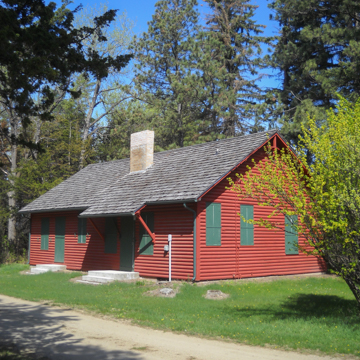This experimental nursery is associated with F. E. Cobb, state forester in 1931 and state administrator of the Prairie States Forestry Project that promoted the Great Plains Shelter belt Project (see RM3). The goal of the shelterbelt program was to plant forty million trees in a one-hundred-mile-wide belt from the Canadian border to Texas to serve as a windbreak against Dust Bowl erosion. The oldest U.S. Department of Agriculture (USDA) Forest Service facility in North Dakota is the Denbigh Experimental Forest that was created, in part, to determine the feasibility of such a forested belt regionally. The nursery was established by the CCC with the U.S. Forest Service in the Denbigh Dunes area to determine which seed sources were adaptable to the Great Plains and the best methods of soil preparation. Denbigh’s forty acres contains forty-three species of trees from Europe, Asia, and the United States. It is a continuing wellspring of genetic woodland resource materials and seed source for the nearby state-operated Towner Nursery. Named in honor of forester and longtime director Joseph Stoeckeler, the arboretum is a valuable educational and scientific information resource, with unpretentious examples of CCC rustic-style buildings. The Forest Service is developing Denbigh as an education center and interpretive site.
You are here
North Dakota State Nursery Experimental Forest
1930s, F. E. Cobb and Joseph Stoeckeler, landscape planners. 3rd Ave. N, off U.S. 2, 3.3 miles southwest of Denbigh
If SAH Archipedia has been useful to you, please consider supporting it.
SAH Archipedia tells the story of the United States through its buildings, landscapes, and cities. This freely available resource empowers the public with authoritative knowledge that deepens their understanding and appreciation of the built environment. But the Society of Architectural Historians, which created SAH Archipedia with University of Virginia Press, needs your support to maintain the high-caliber research, writing, photography, cartography, editing, design, and programming that make SAH Archipedia a trusted online resource available to all who value the history of place, heritage tourism, and learning.


